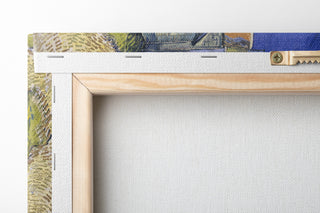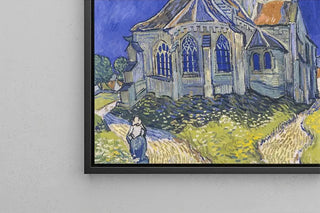Dante and Virgil in Hell - Edvard Weie

A dramatic plunge into shadow: Dante and Virgil in Hell, a vision by Edvard Weie
The composition of Dante and Virgil in Hell captures a psychological confrontation where dark volumes and touches of light sculpt the scene. The color palette, dominated by deep ochres and coal blues, evokes an atmosphere of tension and vertigo, while the pictorial gesture resonates with an almost theatrical energy. The characters' features stand out against controlled impasto and transparencies, giving the subject dramatic intensity. This art print of Dante and Virgil in Hell reproduces the narrative strength of the original while highlighting the textural richness and chromatic depth of the work.
by Edvard Weie, master of colorful gesture and Nordic modernity
Edvard Weie, a Danish painter of the early 20th century, distinguished himself through bold chromatic exploration and a reinvention of classical composition. Influenced by modern developments and the lessons of post-impressionists, Weie develops a pictorial vocabulary based on strengthening color masses and paying particular attention to pictorial structure. His major works explore the relationship between form and light, offering scenes that are both intimate and monumental. Weie's reinterpretation of literary and mythological subjects demonstrates his significant contribution to modern Nordic painting and the evolution of color sensitivity in Scandinavia.
A decorative acquisition with multiple assets
Choosing this art print of Dante and Virgil in Hell is opting for a painting that adds character and depth to a contemporary or classic interior. Ideal in a living room, office, or library, the Dante and Virgil in Hell canvas easily dialogues with noble materials and directional lighting, creating a sophisticated focal point. The art print maintains color fidelity and original texture to offer lasting visual presence, while being suitable for modern hanging formats. In short, this Dante and Virgil in Hell canvas combines artistic value, decorative impact, and quality of execution, inviting daily contemplation.

A dramatic plunge into shadow: Dante and Virgil in Hell, a vision by Edvard Weie
The composition of Dante and Virgil in Hell captures a psychological confrontation where dark volumes and touches of light sculpt the scene. The color palette, dominated by deep ochres and coal blues, evokes an atmosphere of tension and vertigo, while the pictorial gesture resonates with an almost theatrical energy. The characters' features stand out against controlled impasto and transparencies, giving the subject dramatic intensity. This art print of Dante and Virgil in Hell reproduces the narrative strength of the original while highlighting the textural richness and chromatic depth of the work.
by Edvard Weie, master of colorful gesture and Nordic modernity
Edvard Weie, a Danish painter of the early 20th century, distinguished himself through bold chromatic exploration and a reinvention of classical composition. Influenced by modern developments and the lessons of post-impressionists, Weie develops a pictorial vocabulary based on strengthening color masses and paying particular attention to pictorial structure. His major works explore the relationship between form and light, offering scenes that are both intimate and monumental. Weie's reinterpretation of literary and mythological subjects demonstrates his significant contribution to modern Nordic painting and the evolution of color sensitivity in Scandinavia.
A decorative acquisition with multiple assets
Choosing this art print of Dante and Virgil in Hell is opting for a painting that adds character and depth to a contemporary or classic interior. Ideal in a living room, office, or library, the Dante and Virgil in Hell canvas easily dialogues with noble materials and directional lighting, creating a sophisticated focal point. The art print maintains color fidelity and original texture to offer lasting visual presence, while being suitable for modern hanging formats. In short, this Dante and Virgil in Hell canvas combines artistic value, decorative impact, and quality of execution, inviting daily contemplation.





